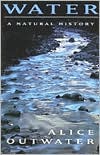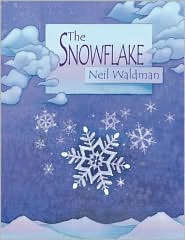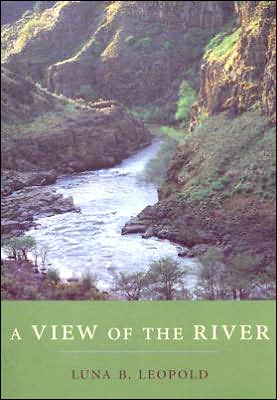Water: A Natural History
An environmental engineer turned ecology writer relates the history of our waterways and her own growing understanding of why our waterways continue to be polluted—and what needs to be done to save this essential natural resourse.Water: A Natural History takes us back to the diaries of the first Western explorers; it moves from the reservoir to the modern toliet, from the grasslands of the Midwest to the Everglades of Florida, throught the guts of a wastewater treatment plant and out to the...
Search in google:
Water: A Natural History takes us back to the diaries of the first Western explorers; it moves from the reservoir to the modern toliet, from the grasslands of the Midwest to the Everglades of Florida, throught the guts of a wastewater treatment plant and out to the waterways again. It shows how human-engineered dams, canals, and farms replaces nature’s beaver dams, prairie dog tunnels, and buffalo wallows. Step by step, Outwater makes clear what should have always been obvious: while engineering can depollute water, only ecologically interacting systems can create healthy waterways. Publishers Weekly A generation after the Clean Water Act was passed, one third of our waters are still polluted, according to the author, and only 6% of contamination is caused by industry. Environmental engineer Outwater, who managed scum and sludge removal in the Boston Harbor cleanup, reaches back into our history to chart the changes in our waters. Once, a tenth of the total land area was beaver-built wetland; the beaver's decline caused the first major shift in the nation's water cycle. The depressions buffalo made on the ground and the holes dug by prairie dogs collected rain and runoff that seeped down to the water table; our waterways have been transformed by the loss of these keystone species. Outwater looks at grasslands and forests, artificial waterways, agriculture, aqueducts and toilet bowls, sewers and sludge (she gives a guided tour of a waste-treatment plant). She makes a strong case for restoring natural systems to public landsrepopulating beaver, bison and prairie dogs. This book is a valuable addition to environmental literature and to our understanding of water. (Oct.)
AcknowledgmentsIntroduction1The Fur Trade32Nature's Hydrologists193The Woods354The Voyage of Rainfall555A Sea of Grass676Plowing the Plains857The Water Over the Dam1018Mussels, Gators, and the Corps1179Aqueducts and Toilet Bowls13310Down the Drain, Up the Stack14911What Sludge Tells You165Notes187Index203
\ Publishers Weekly\ - Publisher's Weekly\ A generation after the Clean Water Act was passed, one third of our waters are still polluted, according to the author, and only 6% of contamination is caused by industry. Environmental engineer Outwater, who managed scum and sludge removal in the Boston Harbor cleanup, reaches back into our history to chart the changes in our waters. Once, a tenth of the total land area was beaver-built wetland; the beaver's decline caused the first major shift in the nation's water cycle. The depressions buffalo made on the ground and the holes dug by prairie dogs collected rain and runoff that seeped down to the water table; our waterways have been transformed by the loss of these keystone species. Outwater looks at grasslands and forests, artificial waterways, agriculture, aqueducts and toilet bowls, sewers and sludge (she gives a guided tour of a waste-treatment plant). She makes a strong case for restoring natural systems to public landsrepopulating beaver, bison and prairie dogs. This book is a valuable addition to environmental literature and to our understanding of water. (Oct.)\ \ \ \ \ Library JournalIf the United States is to have clean water again, we need to bring back the beaver and the buffalo. This theory may seem far-fetched, but after reading this book, readers will see that it makes wonderful sense. The author is an environmental engineer, with experience in sludge management through her work on the late 1980s Boston Harbor cleanup project and consulting business. Her main premise is that legislative control of industrial waste is not sufficient to clean up our polluted waterways. Natural cleansing as water travels through its cycle is needed as well, but the systems that provide it have been severely interrupted. Outwater's explanations of how beaver and buffalo (and other keystone species, such as prairie dogs, alligators, and freshwater mussels, to name a few) alter the environment, and in the process create cleansing paths for water, are well constructed and informative. The chapter on sewage systems, though not dinner conversation, is nonetheless fascinating. This thought-provoking book belongs in all environmental collections, academic and public.Nancy J. Moeckel, Miami Univ. Lib., Oxford, Ohio\ \ \ School Library JournalA plea for ecologial conservation that focuses on "keystone species" such as beavers, prairie dogs, and mollusks, describing how "nature's engineers" must be allowed to revive our decimated waterways. (Apr.)\ \ \ \ \ School Library JournalYAThis fascinating history of America's water systems concentrates on what the author describes as keystone species: beaver, prairie dogs, buffalo, freshwater mollusks, and alligators. The effect of European settlers on grasslands, forests, and waterways, and modern society's efforts to reshape the land and its waters are also covered, but the focus is on the beautiful, effective system of cleansing water that nature provided, and that we now must attempt to restore. Outwater worked on the Boston Harbor cleanup and found that the efforts to reduce industrial and municipal contaminants, while substantial, have had little effect on water quality in the last decade. She argues that those keystone species, "natures' engineers," must be allowed to flourish, at least on public lands, before our waterways can be restored to something close to their former state. YAs with an interest in the environment can browse through this highly readable resource and discover amazing facts, such as how the demand for beaver hats in 17th-century Europe caused widespread destruction of the wetlands in this country, and how the elimination of buffalo and prairie dogs degraded the streams and rivers of the plains and helped drain their aquifers.Molly Connally, Kings Park Library, Fairfax County, VA\ \ \ \ \ Kirkus ReviewsThe parts are considerably better than the whole in this disjointed work on water ("the blood of land") in North America.\ Trained as an environmental engineer, Outwater is at home with the technical minutiae of such matters as water treatment and sewage handling, about which she writes with surprising vigor. As a collection of oddments on the human manipulation of water, her book has many virtues: You will learn, for instance, that Poughkeepsie, N.Y., was the first American town to develop a filtered water supply; you will also learn in great detail how "raw sludge brew" is separated, how methane from sewage is converted to a source of power, and how aqueducts work. Outwater is also good at describing some of the basic matters of river ecology, noting the importance to the food chain of free-flowing rivers that support high levels of nutrients, and she makes a good case for restoring beavers and prairie dogs to public lands as agents to increase the production of wetlands, a crucial element of the ecosystem largely reclaimed over the past two centuries for agricultural and municipal uses. But Outwater is less successful at weaving the complexities of human affairs into larger questions of nature and the environment. She relies too often on undigested facts rather than carefully interpreted information. What is missing from this book is an appreciation for water both as a natural element—there is precious little in these pages about the chemistry of water or on how rain happens to form and fall—and as a defining force in human history.\ The focus is much narrower than the broad title and subtitle suggest, and readers will have to look elsewhere for a thorough natural history of water.\ \ \






